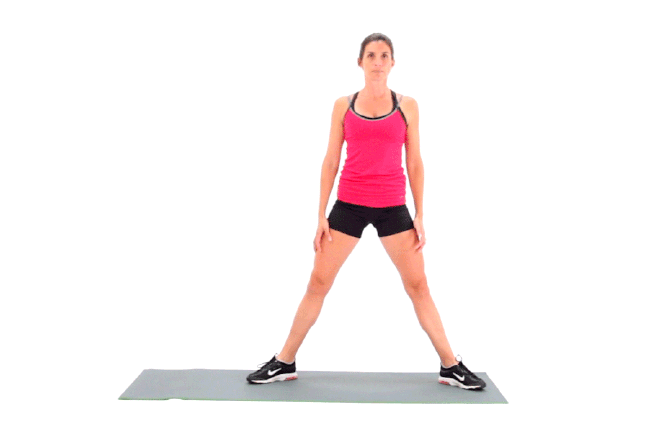What Is a Pile Squat?

The muscle groups of your upper legs ,inner thighs, lower legs and glutes work together to support and balance your lower body and upper body. All types of squats focus on these areas of your body, but each type targets them in a different way.
Pile squats resemble other squat types, but they mostly resemble the popular squat variation known as the pliè squat or sumo squat. Both pile and pliè squats use a unique foot position to change the nature of the exercise’s movement.
How to warm up and stretch?
Before you start any workout, warm up for five minutes to get your heart pumping with a variation of cardio and bodyweight exercises. Run in place or jump rope, for example. Stretch your calves, quads, hamstrings and any secondary muscles before going into squats. For your calves, stand up and lift your toes toward your shins.
Hold the stretch for 15 to 20 seconds per leg. Balance on a single leg and pull your heel toward your glutes to stretch your quads. Hold this stretch 20 to 30 seconds per leg. Lastly, place the heel of one foot on the floor, six inches past the toes of your other foot. Stretch your hands toward the forward foot until you feel the pull in the back of your upper leg. This will look very similar to a lunge. Hold the stretch for 15 to 20 seconds and then switch to the other leg.
How to do a Standard Squat
The standard squat is one of the best at home lower body workouts and can be done with a barbell or dumbbells. Not only is it a great leg workout but it also strengthens the lower back. Setting up for a squat requires you to stand with a flat back and your feet shoulder-width apart. Point the toes of both feet straight ahead. This will be your starting position. When you lower your body, keep your back straight and centered between your legs. Bend your arms at the elbows and raise both hands up, as you move from the top to the bottom of the exercise. Stop moving downward when your thighs are parallel to the floor or at a 90 degree angle. At the same time, stop your hands at eye level. Lower your arms as you return to the standing position.
How to do a Pile Squat
When standing in the proper form for a squat, rotate your feet so your toes point away from your body. This places your feet at roughly 45-degree angles to your body, which is the same foot position as the pliè squat. Hold one end of a dumbbell or even a kettlebell with both hands. Allow the loose end of the dumbbell to face the floor as you lower your body during the squat. Remember to keep your back straight as you raise and lower your body. Start with five squats and progress by adding more repetitions, or reps, each time you exercise.
Muscles Worked
Like the standard squat, your quadriceps, hamstrings, gluteus muscles and calves get a lot of attention with pile squats. Adding the weight of a dumbbell to the exercise increases the resistance applied to those areas of your body while making your core muscles help balance the added weight you are holding in front of your body. By doing a wide stance you can work your inner leg as well.
References
Writer Bio
Lynda Schwartz is a fitness professional who began writing in 2004. She has contributed to "Women's Day" and "Good Housekeeping" magazines, as well as covered fitness and well-being for online publications. Schwartz holds a bachelor's degree in exercise science and health promotion.
